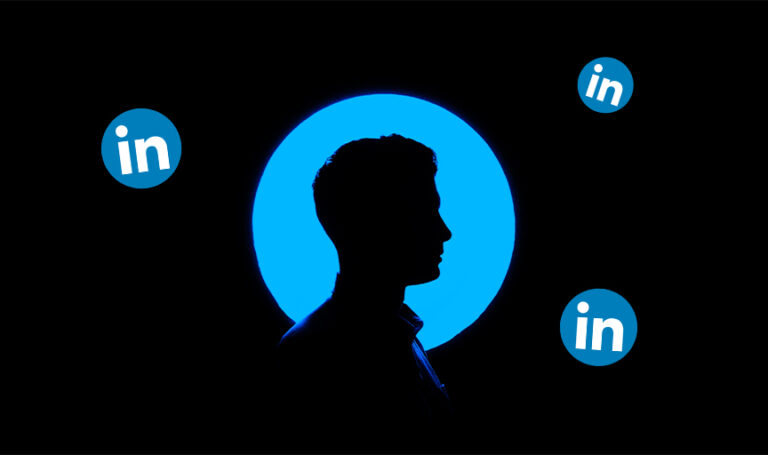How LinkedIn has managed to appeal to four generations at once, gen Z included

Have you noticed a lot more curated, (slightly too) personal content on LinkedIn over the past few years? You’re not alone. After first going through a glow-up post-2008 financial crash, LinkedIn has been steadily becoming more and more like other social media channels.
Launched in 2003, the website was initially intended to be a digital CV of sorts, to help connect jobseekers to people they already knew or those in different industries. Today, the platform’s function is still at its core the same, however, it’s used for a lot more than just browsing available jobs in your local area (or looking up your Hinge match). Recently, there’s been a lot of talk about how LinkedIn is the new Facebook—but, how is gen Z using the platform? Let’s get into it.
Over the past couple of decades, LinkedIn has morphed into the social media platform it is today—changing gradually to respond to various waves of industry shifts and job searching. The most recent iteration of this was the employment uncertainty and job loss that came with the COVID-19 pandemic.
According to the UK Parliament, “the number of people in work fell by 825,000 between January-March 2020 and October-December 2020, while unemployment rose by almost 400,000.” Then in February 2022, nearly two years after the start of the pandemic, economic inactivity continued to grow. Conversely, from spring of 2021 to 2023, LinkedIn reported that it saw a 42 per cent year-over-year increase in content shared and a 27 per cent increase in content viewed.
In response to this boom in popularity—and to attract and retain both younger and older generations—LinkedIn has made several changes to its interface and user experience over the past year, including an algorithm update in June 2023. Some of these new features you may have seen include a newsletter for premium members, a podcast network and an increase in on-site video capabilities.
“We’re seeing a lot of gen Z join the network right now,” said CEO Ryan Roslansky in an interview with the Wall Street Journal. “They’re much more interested in portraying themselves through video or through a much more robust profile than maybe older generations.” This may be why you’re seeing a lot more, almost TikTok-style content on your feed—as well as self-promotional videos on LinkedIn profiles, à la Elle Woods’ Harvard application.
Another thing gen Zers love about LinkedIn? How it’s an earnest space compared to other social media networks. While LinkedIn does have its fair share of aspirational or even inflammatory content, by comparison, it’s quite tame. “It is a professional social network, and so doesn’t lend itself to strong opinions, trolling or abuse,” says James Ball, the global editor at The Bureau of Investigative Journalism.
He continues, “people self-censor to a much greater degree on LinkedIn than other networks, making moderators’ jobs easier, but leaving people fishing for things to post (hence the banalities).” However, the cut-and-dry, banal function at the heart of LinkedIn makes it a simpler internet experience for most.
@lp24s How low can you go from scrum 🤣 employment first tho #lp24s #tiktok #viral
♬ this feeling - Øneheart
In an article for The Cut titled Teens Love LinkedIn, writer Anya Kamenetz interviewed several teenagers (mostly those who are still in high school) on how they use the site. The main consensus was that LinkedIn serves as “a sanctuary from the angry rants, dark humour, thirst traps, and FOMO characteristic of other social media networks,” Kamenetz writes.
Likewise, as many continue to retreat from Elon Musk’s X (which has lost approximately 13 per cent of its app’s daily active users since October 2022), some are flocking to LinkedIn to fill the Twitter-shaped gap in their social media diet. Of course, the website can inspire anxieties surrounding hustle culture and be flooded with toxic, “insufferable content”—as the popular subreddit, LinkedIn Lunatics, calls it. However, for most, the overall LinkedIn experience seems to be the opposite of doomscrolling.
Ana Homayoun—a writer whose work focuses largely on teenage perfectionism and social media—also points to another reason why gen Z are joining LinkedIn: their increased scepticism of the value of going to university. Rather than seeing higher education as an inevitable next step, gen Zers tend to see it as one of a series of options for their future. Speaking to this, Homayoun says, “The increase in the cost of college and how fast the job market is changing has led to students wanting to get this info earlier. They are getting the message that they can find info about careers and life and work on LinkedIn, and build a professional network before they go to college or even instead of going to college.”
On the other hand, gen Z’s growing use of LinkedIn could be attributed to the hold the gig economy has on younger members in (and entering) the workforce. To effectively promote necessary freelance jobs or side hustles, the platform offers users a simple way to create a succinct, professional profile and showcase their work. Likewise, by posting more to LinkedIn’s infinite scroll-style feed and making hundreds of connections, one can expand their brand and online persona. Some may see this as a positive, while others could take it as a negative.
The bottom line? LinkedIn has successfully appealed to nearly four generations at once, something most other social media networks have failed to do. As gen Z move further into and continue to enter the workforce, the website will undoubtedly shift to become even more social—so get ready for even more curated LinkedIn content.




